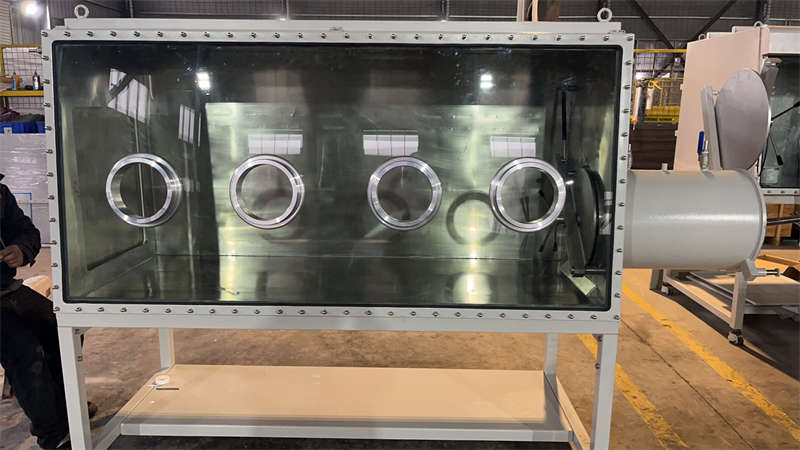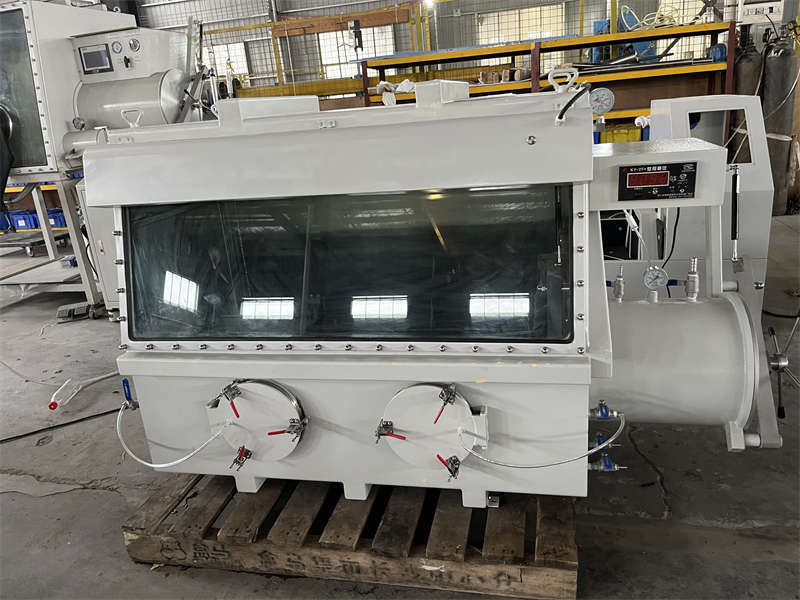The anaerobic glove box, a meticulously engineered chamber, is an indispensable tool for researchers and industrialists alike.
It provides a controlled environment devoid of oxygen, essential for handling air-sensitive materials. India, with its growing scientific and industrial landscape, has a burgeoning demand for these specialized enclosures. This article delves into the intricacies of procuring anaerobic glove boxes in India, from understanding the technology to selecting the right supplier.

The Anaerobic Imperative
An anaerobic environment is characterized by the absence of oxygen. It is a critical condition for the handling of materials that react or degrade in the presence of oxygen, such as alkali metals, pyrophoric compounds, and certain organometallic compounds. The anaerobic glove box provides this controlled atmosphere, enabling researchers to manipulate these materials safely and effectively.
Essential Components of an Anaerobic Glove Box
A typical anaerobic glove box comprises several key components:
Chamber: The primary enclosure, usually constructed of stainless steel for durability and cleanability.
Glove Ports: Allow for human interaction with the chamber's interior while maintaining the anaerobic environment. Purification System: Employs a combination of catalysts, molecular sieves, and oxygen sensors to remove oxygen and maintain a low oxygen level.
Atmosphere Control System: Regulates the internal atmosphere, including pressure and gas composition.
Sealing System: Ensures the integrity of the anaerobic environment by preventing oxygen ingress.Factors Influencing Glove Box Selection
The choice of an anaerobic glove box is dependent on several critical factors:
Application: The specific use of the glove box dictates its size, material, and purification system requirements.
Oxygen Level: The desired oxygen concentration within the chamber determines the purification system's capacity.
Chamber Size: The dimensions of the glove box should accommodate the intended tasks and equipment.
Material Compatibility: The materials to be handled within the glove box must be compatible with the chamber's internal environment.
Budget: Cost considerations will influence the choice of materials, features, and overall system complexity.
The Indian Market: A Growing Demand
India’s scientific and industrial sectors are experiencing rapid growth, driving the demand for anaerobic glove boxes. While the domestic manufacturing base for these specialized systems is still developing, the market is well-served by a combination of domestic and international suppliers.
Key considerations when selecting a supplier:
Technical Expertise: The supplier should possess in-depth knowledge of anaerobic glove box technology.
Customisation Capabilities: The ability to tailor a glove box to specific requirements is essential.
After-Sales Support: Reliable maintenance and service are crucial for uninterrupted operation.
Compliance: The supplier should adhere to relevant safety and quality standards.Procurement Process and Considerations
Acquiring an anaerobic glove box involves several steps:
Requirement Definition: Clearly specify the application, size, and performance parameters of the required glove box.
Supplier Research: Identify potential suppliers based on their reputation, product offerings, and customer reviews.
Quotation and Comparison: Obtain detailed quotations from multiple suppliers and compare specifications, pricing, and delivery terms.
Site Visit (Optional): If feasible, visit the supplier's facility to assess their manufacturing capabilities and quality control measures.
Negotiation: Discuss terms and conditions, including delivery, installation, training, and warranty.
Purchase Order: Formalize the order with a detailed purchase order outlining specifications and terms.
Installation and Validation: Ensure proper installation and conduct thorough performance validation.Maintenance and Calibration
Regular maintenance is essential for optimal glove box performance and longevity. This includes:
Filter Replacement: Periodic replacement of purification system filters to maintain efficiency.
Seal Inspection: Regular inspection of seals to prevent leaks.
Oxygen Monitoring: Continuous monitoring of oxygen levels to ensure anaerobic conditions.
Calibration: Calibration of sensors and instruments to maintain accuracy.Safety Considerations
Anaerobic glove boxes involve working with potentially hazardous materials. Safety protocols must be strictly adhered to:
Personal Protective Equipment (PPE): Use appropriate PPE, including gloves, lab coats, and safety glasses.
Emergency Procedures: Develop and implement emergency procedures for handling incidents.
Training: Provide comprehensive training to personnel operating the glove box. Procuring an anaerobic glove box is a critical investment for any organization handling air-sensitive materials. By carefully considering the factors outlined in this article and working with a reputable supplier, it is possible to acquire a glove box that meets the specific requirements of an application. The ongoing maintenance and operation of the glove box are equally important to ensure its continued performance and safety.
Note: This article provides a general overview of anaerobic glove box procurement in India. To obtain specific information about suppliers, prices, and regulatory requirements, it is essential to conduct thorough market research and consult with industry experts.
Would you like to focus on a specific aspect of anaerobic glove box procurement or explore a particular industry’s requirements in more detail?
